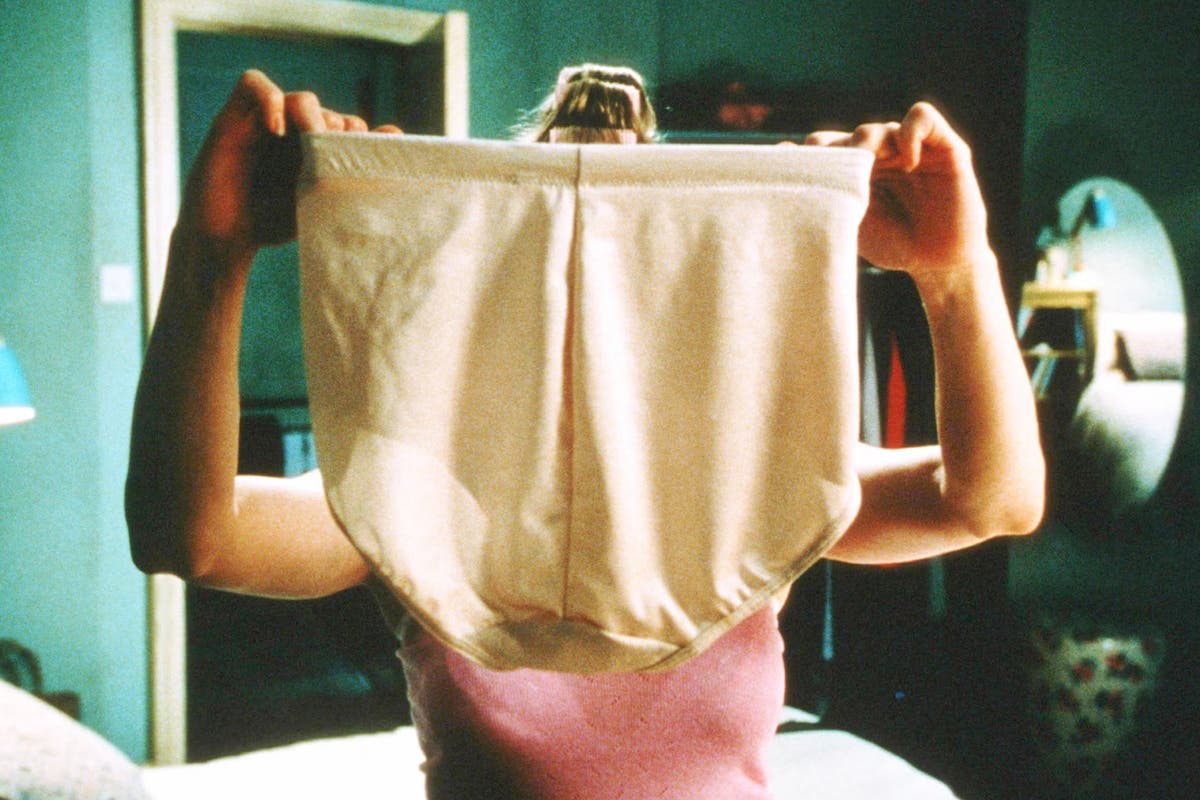Your support helps us to tell the story
From reproductive rights to climate change to Big Tech, The Independent is on the ground when the story is developing. Whether it’s investigating the financials of Elon Musk’s pro-Trump PAC or producing our latest documentary, ‘The A Word’, which shines a light on the American women fighting for reproductive rights, we know how important it is to parse out the facts from the messaging.
At such a critical moment in US history, we need reporters on the ground. Your donation allows us to keep sending journalists to speak to both sides of the story.
The Independent is trusted by Americans across the entire political spectrum. And unlike many other quality news outlets, we choose not to lock Americans out of our reporting and analysis with paywalls. We believe quality journalism should be available to everyone, paid for by those who can afford it.
Your support makes all the difference.
When I was growing up, my teenage brain associated Marks and Spencer with one thing and one thing only, thanks to Bridget Jones: giant pants. The ultimate Noughties literary heroine immortalised in film never outright said her infamous “scary, stomach-holding-in pants very popular with grannies the world over” were from M&S, but I think it’s safe to say that we all just… assumed.
Synonymous with “frumpy”, Mark and Sparks was where your mum and grandma shopped for outfits that nodded to trends without ever seeming to truly understand them, like an alien attempting to mimic human behaviour; it was where people who didn’t really “get” fashion bought things that they considered stylish but somehow always missed the mark in a million minuscule ways. Yes, M&S was for underwear that prioritised function over form and basic necessities – your vest tops, long johns, socks. But outerwear? That people would actually see? Not unless you wanted to look ready for your bus pass several decades too early.
This was a truth universally acknowledged, as unshakeable as the fact that shopping in Topshop signified you were young and trendy (at least until you got home and realised that no attire in the world had the power to make you look like Kate Moss). Yet it seems old dogs can learn new tricks – and the quintessentially British brand’s OAP image problem could finally be a thing of the past.
Bosses have claimed that the average age of the M&S customer has fallen by five years, while the business has tempted 1.4 million new shoppers to purchase items online over the past 12 months. “The exciting thing is that the average age of these customers is five years younger based on recent testing,” Richard Price, managing director of clothing and home, told theTelegraph, calling it a “really encouraging sign” that M&S was now “attracting a new generation of customers” without losing favour with its loyal older fanbase.
Although the high-street stalwart has remained tight-lipped in terms of what age that average customer now is, recent data from market research group Kantar suggested that Marks has managed to increase sales among all demographics, with the rise in under-35s the most pronounced.
At a point where competition in retail has become ever fiercer thanks to the proliferation of dirt-cheap fast-fashion brands like Shein, it feels nothing short of miraculous that a 140-year-old veteran has risen, phoenix-like, from the ashes to become – whisper it – pretty damn cool.
But perhaps the signs have long been there for those with eyes to see. In a world where getting a piece of clothing into the hands of the right influencer can turn it into an overnight sell-out sensation, M&S has had an uncanny ability to create viral moments on its own over the past few years. I still remember a headline catching my eye in the summer of 2018: “M&S does it again! Fashionistas go into a frenzy over a £39.50 polka dot jumpsuit that’s taken over Instagram (and the latest batch sold out in hours)”. I scoffed at the very idea of anyone even remotely fashionable fighting to get their hands on something from Marks and Sparks… before I clicked on the story and immediately fell in love with the item in question. High neck, ruched sleeves, an elasticated waist and bold red stripe down the side in contrast to the navy fabric – this was, as promised, as close to “perfect” as a jumpsuit was ever going to get. It even had pockets!
It was but the work of a moment to transform me from hardened cynic to woman possessed, so determined to get my hands on one that I scoured the length and breadth of the internet and ended up paying £20 over retail value on eBay. Though it felt like the equivalent of ticket scalping – people were clearly buying in bulk and then reselling them for a profit – I’ve never regretted the decision. Six years later, that viral jumpsuit remains my most frequently complimented wardrobe staple.
More recently, 2024 has been the year of the M&S viral piece, with numerous stand-outs achieving similar levels of celebrity courtesy of social media. A new dress seemed to hit the big-time every few weeks over the summer, including a £45 leopard-print dress that was a dead ringer for a similar Ganni design (but cost about £200 less); a £39.50 white cami shift that was quickly dubbed “the dress of the season” and kept selling out; and a flattering jersey textured dress with long sleeves priced at just £29.50.
“Marks & Spencer’s fashion department has truly outdone itself this summer,” reported Grazia at the time, “the high-street hero has once again emerged as the go-to brand for chic basics.” Elle, meanwhile, published an article declaring that Marks had “won summer”.
Forget feeling embarrassed to admit you’d bought something from M&S – people were announcing the fact with pride
Then there was the sell-out denim midi, a two-tone slip that featured in Sienna Miller’s M&S collab, and three autumn dresses plastered all over TikTok: a red, long-sleeved, textured number, a green, high-neck, tiered Per Una showstopper, and a tie-neck, three-quarter sleeve, leopard-print design that became an instant classic. All were beloved by influencers for their simplicity and hard-working versatility; all added to M&S’s rep as a born-again high street darling, frequented by the most on-trend of Gen Z and millennials.
There was a point a few months ago when trying to get hold of the brand’s faux-fur “mob wife” winter coat or its wide palazzo leg jeans – combining soft, stretchy cotton fabric with a wide-leg silhouette – was as frustrating an endeavour as trying to get hold of Glastonbury tickets. Forget feeling embarrassed to “admit” you’d bought something from M&S – people were announcing the fact with pride.
The business even announced in August that it would be launching a series of clothing-only stores to capitalise on apparel sales after three consecutive years of growth post-pandemic. The first stand-alone clothing boutique opened in London’s Battersea Power Station; more will follow if it proves a success.
So here’s to you, M&S – a brand as adept at the strategic comeback as Bridget Jones herself. Just don’t forget your roots. There’ll always be a place in our hearts – and wardrobes – for those giant, stomach-holding in granny pants.
Source link
 Insights Daily World is your one-stop destination for discovering unbeatable discounts, trending deals, and the latest offers across various products. Stay informed with the newest updates, breaking news, and insightful deals, all designed to help you save and stay ahead
Insights Daily World is your one-stop destination for discovering unbeatable discounts, trending deals, and the latest offers across various products. Stay informed with the newest updates, breaking news, and insightful deals, all designed to help you save and stay ahead




